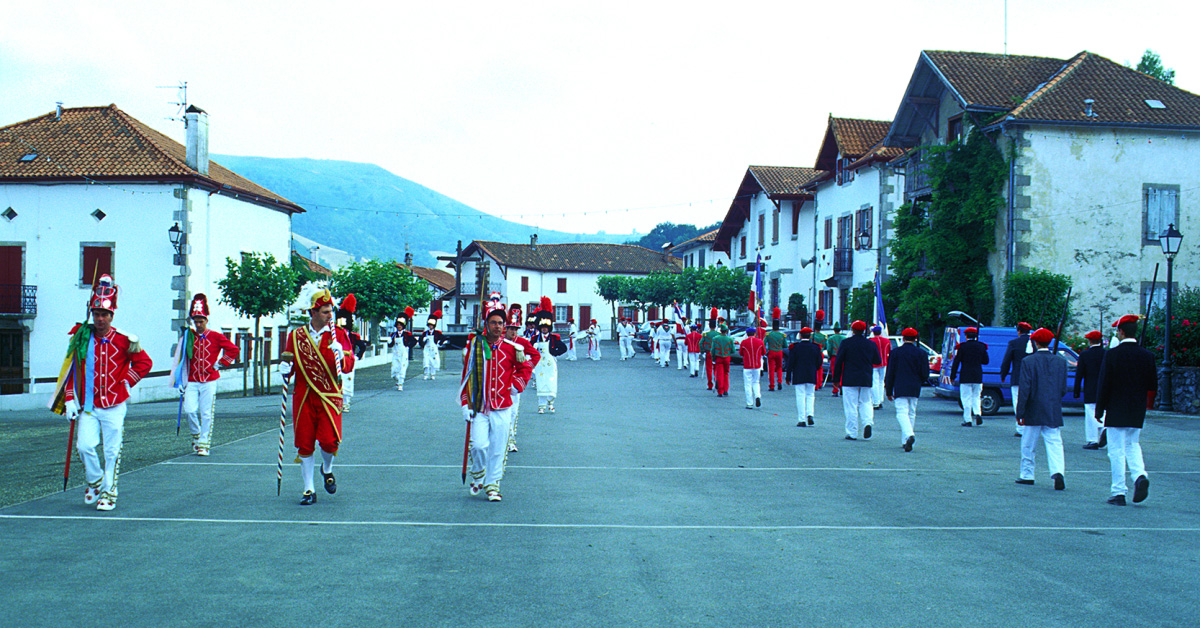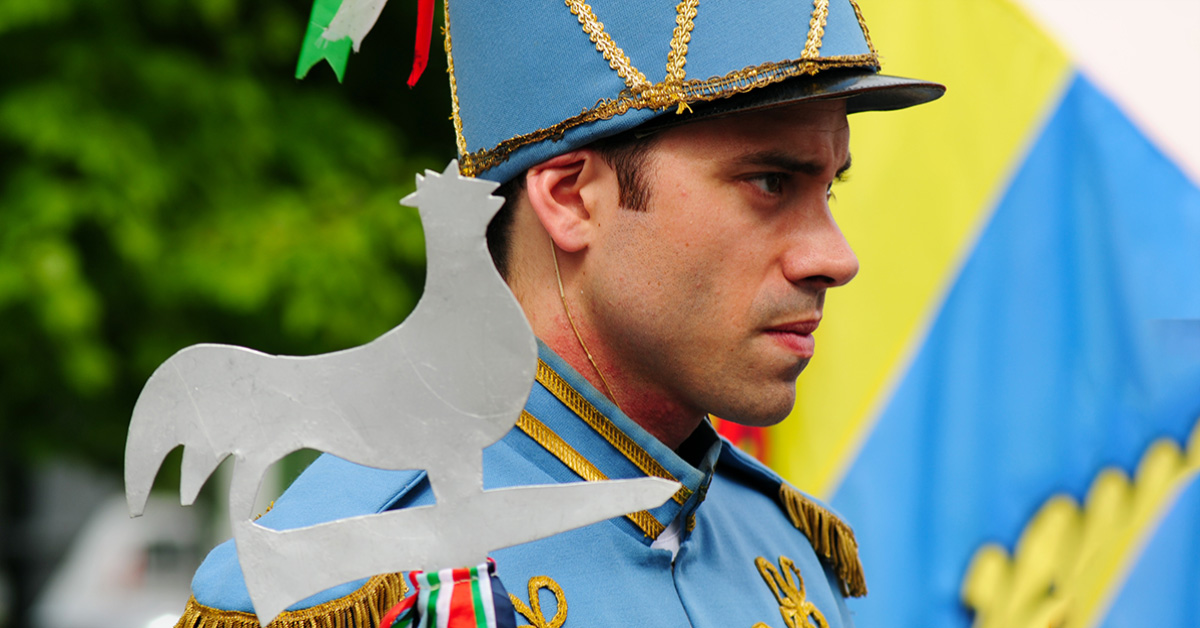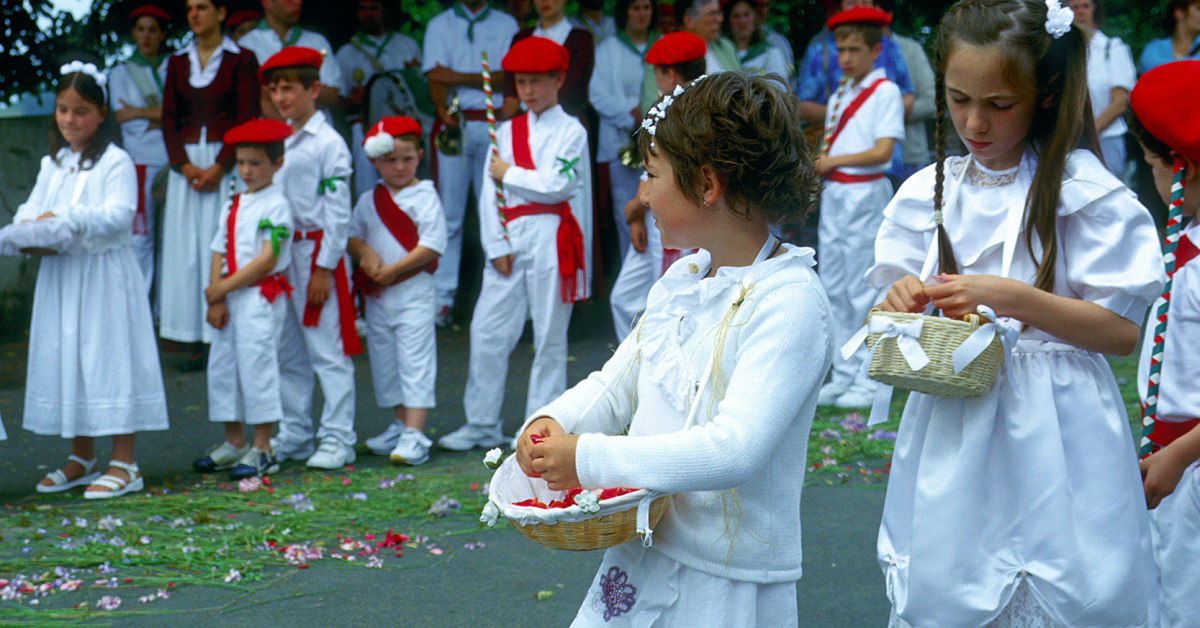Basque ethnography at a glance
Around fifty years after 1264, the year in which Pope Urban IV instituted the feast of Corpus Christi (“the Body of Christ”), processions began to form part of the celebrations. “Extraordinary” figures (costumed figures known as giants and big heads, the dragon-like tarasca, troupes made up of members of guilds, etc.) were included with great pomp and circumstance. However, with the passing of time and following the recommendation of the Second Vatican Council to get rid of so much paraphernalia, the festivity has been gradually celebrated on an ever-smaller scale (and in many cases it has disappeared) right up to the present.
The years have not been kind and only a few places now retain or have recovered certain features of the feast day. Special mention should be made of Toledo, Seville, Valencia and other towns with unusual and even eccentric characters. Only a handful of towns or villages celebrate it here. Along with the flag waving in Lesaka, Bera and Doneztebe, Oñati is where the feast day has continued to be celebrated, with barely any changes, since the 16th century.
However, there is an area made up of the small villages along the border between Labourd and Lower Navarre where, thanks to the enthusiasm, hard-work and involvement of the local residents, Fête-Dieu (as the Corpus Christi procession is known in French) and Besta Berria or Pesta Berria in Basque – a name whose origin comes from the start of the text (“Officium novae solemnitatis…”) of the Transiturus de hoc mundo… Bull by Pope Urban IV declaring the feast of Corpus Christi – is held on the Sunday of Corpus Christi and the following Sunday (the Octave) every year.
Any outsider attending the Besta Berri for the first time may find it strange to see a colourful procession, with a motley crew and styles, making its way, practically in formation, from one side of the village to the other. The procession features many different characters: oilarrak or coqs (cockerels); zapurrak or zanpurrak, o sapeurs (sappers); suisa o le suisse (Swiss guards) alabardariak or lantzierak, or lanciers (yeomen or lancers); banderariak or porteurs de drapeaux (standard bearers); kaporalak; kapitain and ofiziala, (captain and officers); gendarmeak (gendarmes); soldadoak or soldats, soldiers in two files; makilaria or tambour major (drum major); brass band; First Communion children scattering petals; the priest holding the monstrance, under a canopy; the members of the local council, or relevant authority; men, sometimes, in two rows; and the rest of the community.
Morning observance on the first day and vespers on the Octave begin with the priest being collected from his home and accompanied to the church to say mass. This is followed by procession along the carpeted streets and the blessing at a makeshift altar. The procession returns to the church to complete the Eucharist celebration. The ritual, without the canopy, then ends with music and dancing, and if the need arises, stopping for refreshments.
Records show that several villages (Ainhoa, Arrosa, Bastida, Donazaharre, Gerezieta, Kanbo, Lartzabal, etc.) used to celebrate it and, in others, (Armendaritze, Bidarrai, Heleta, Iholdi, Irisarri, Lekorne, Luhuso, Makea, Ortzaize…) the tradition has survived to the present day. The steady decline in population has left us with an increasingly shorter list and a ceremony on a smaller scale… In the end, it is the last bastion of a “new festivity” that has become very “old”.
Emilio Xabier Dueñas
Folklorist and ethnographer




